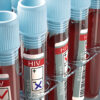Health
New study calls for change of malaria test in Uganda

Pregnant mothers in Uganda are at a high risk of dying from Mlalaria
Researchers working with Mbarara University of Science and Technology (MUST) discovered that the current test being used in Uganda – the “HRP2” test, takes a very long time to indicate negative after a child had malaria (up to 35 – 42 days).
“It can therefore give false positive results when children present with fever again after they had malaria in the last 6 weeks. This means that any fever could be misdiagnosed as malaria and the child will be treated for malaria again, but may in fact have another illness, resulting in avoidable complications and even fatalities,”said Dr Yap Boum II, the Director of Epicentre, Uganda, one of the research firms that did the study.
Boum added: “We have assessed an alternative rapid test – called the “pLDH test” which does not give this false positive result and does not cost any more than the current test.”
The researchers came to the conclusions after studying the use of the two tests on 5000 children in Mbarara and Kazo districts which have low and high malaria incidences respectively.
The study highly recommends that health workers ‘must’ change to the ‘pLDH’ especially in places where malaria is very common to avoid misdiagnosing diseases.
“We strongly recommend that the doctors should switch to the new pLDH test in any case where a child has fever in regions where malaria is very common.
“In regions where malaria is uncommon, such as urban settings, the HRP2 test remains a good test as it is slightly more sensitive than the pLDH test in these conditions,” Dr Boum II explains.
Boum says that both tests are manufactured by the same companies and should therefore present no added costs for hospitals and clinics to source the preferred test to use – especially in children recently diagnosed with malaria.
“We still do not have the ideal rapid diagnostic test – also known as an RDT – and therefore health workers must make an informed choice between the available tests. When using the HPR2 test it is possible that they may over-treat patients and risk overlooking other possible reasons for fever.
The Development Research Uptake In Sub-Saharan Africa Project (DRUSSA) participated in the study which was funded by the aid agency Medicins Sans Frontier.
The study comes as Uganda joins the international community to commemorate World Malaria Day April 25. Malaria is the number one cause of death in Uganda especially among children and pregnant mothers.
Reports suggest that malaria kills between 320-350 children every day in Uganda and is the leading cause of ill-health.
Comments


















